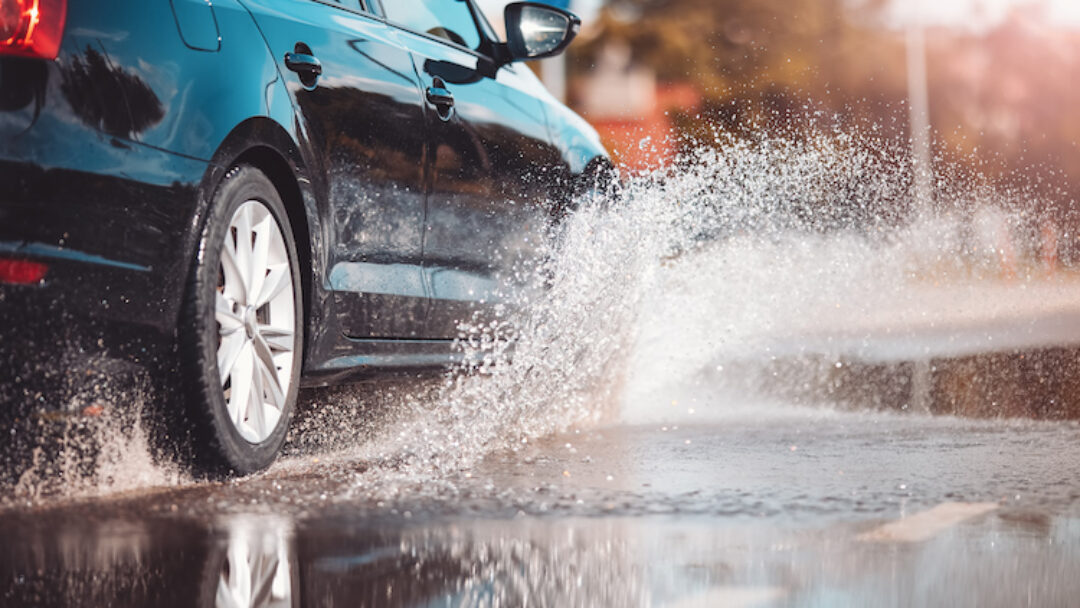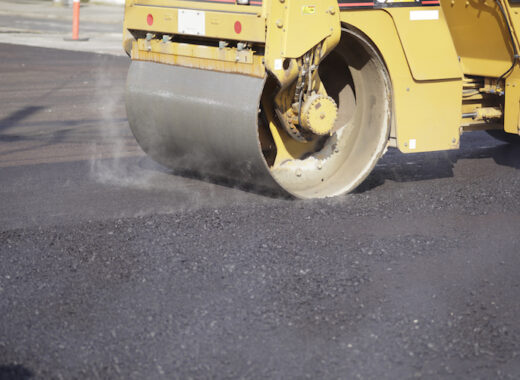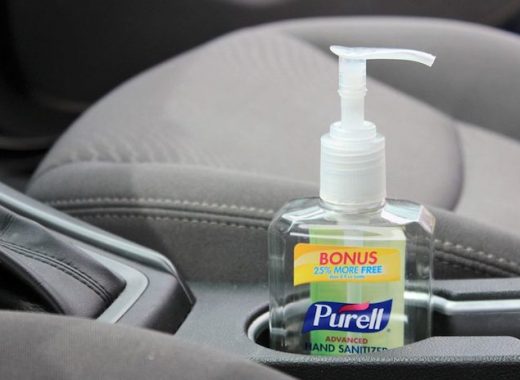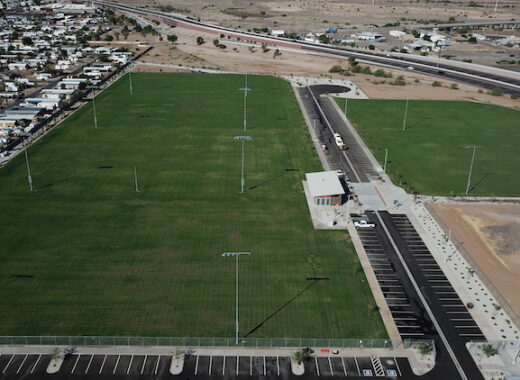Record-setting storm are heading into Arizona after flooding many parts of Southern California. Driving in heavy rain can be extremely dangerous, especially if you are not prepared. Rainy conditions significantly reduce visibility and make the roads more slippery, increasing the risk of accidents. In Arizona, where monsoon season brings intense downpours, it is crucial to understand the dangers and take necessary precautions. By being aware of the risks and following some essential tips, you can ensure your safety on the road even during the heaviest rainstorms.
One of the biggest dangers of driving in heavy rain is reduced visibility. Rainfall can obstruct your view of the road, other vehicles, and potential hazards. Additionally, the spray from other vehicles can further impair your visibility. It is imperative to use your windshield wipers effectively and adjust your speed according to the visibility conditions. If the rain becomes too heavy and your visibility is severely compromised, it is best to pull over to a safe location until the rain subsides.
Another significant danger of driving in heavy rain is the increased risk of hydroplaning. Hydroplaning occurs when a layer of water builds up between your tires and the road, causing a loss of traction. This loss of traction can result in the loss of control over your vehicle, leading to accidents. To prevent hydroplaning, it is essential to ensure that your tires have sufficient tread depth and proper inflation. Additionally, avoid sudden braking or turning, as these actions can increase the likelihood of hydroplaning.
Preparing your vehicle for rainy conditions
Before hitting the road during an Arizona rainy, it is essential to ensure that your vehicle is prepared to handle the wet conditions. Taking some time to check and maintain certain aspects of your vehicle can greatly enhance your safety during heavy rain.
Firstly, make sure that your windshield wipers are in good condition and functioning properly. Worn-out wiper blades can smear the rain across your windshield, obstructing your vision. If your wiper blades are cracked or leave streaks, it is time to replace them. Additionally, check your windshield washer fluid level and ensure it is filled up.
Secondly, check your tires for proper inflation and tread depth. Well-maintained tires are crucial for good traction on wet roads and can help prevent hydroplaning. Use a tire pressure gauge to check the inflation levels and refer to your vehicle’s manual for the recommended pressure. If your tires are worn out and have low tread depth, consider replacing them for optimum safety.
Lastly, ensure that all your vehicle’s lights are functioning correctly. Visibility is key during heavy rain, and having properly functioning headlights, taillights, and turn signals is essential. Regularly check and replace any bulbs that are not working to ensure that your vehicle remains visible to other drivers on the road.
Safe driving practices in the rain
When driving in heavy rain, it is crucial to follow safe driving practices to minimize the risk of accidents. By adopting these practices, you can navigate through the wet conditions more effectively and ensure the safety of yourself and others on the road.
First and foremost, reduce your speed when driving in heavy rain. Wet roads reduce traction, making it harder to control your vehicle. Slowing down will give you more time to react to any potential hazards and will also reduce the risk of hydroplaning. Remember, it is always better to arrive at your destination safely, even if it takes a little longer.
Maintaining a safe following distance is another essential practice when driving in the rain. Increase the distance between your vehicle and the one in front of you to allow for more reaction time. This will give you ample space to brake safely and avoid collisions. Remember, it takes longer to stop on wet roads, so keep a safe distance to prevent rear-end accidents.
Using your headlights is not only a legal requirement but also a crucial safety measure during heavy rain. Turn on your headlights, even during the day, to improve your visibility to other drivers. This will help prevent accidents and ensure that you are aware of the presence of other vehicles on the road. Additionally, avoid using high beams, as they can cause glare and further impair visibility.
How to handle hydroplaning
Hydroplaning can be a terrifying experience, but knowing how to handle it can help you regain control of your vehicle and prevent accidents. If you find yourself hydroplaning, follow these steps to stay safe:
- Stay calm and avoid sudden movements: Do not panic and avoid any sudden acceleration, braking, or turning. Sudden movements can worsen the situation and cause you to lose control of your vehicle.
- Ease off the accelerator: Gently release the accelerator pedal to help your tires regain traction. This will allow your vehicle to slow down and regain stability.
- Steer straight: Keep your steering wheel steady and avoid making any abrupt turns. Steering into the skid can cause your vehicle to spin out of control.
- Avoid braking: Do not apply the brakes if you are hydroplaning. Braking can cause your wheels to lock up, making it even harder to regain control. Instead, focus on steering and gradually reducing your speed.
- Wait for traction to return: Once your tires regain traction, you will feel the steering respond. At this point, you can gently apply the brakes to slow down further, if necessary.
Remember, prevention is always better than cure. Regularly check your tires, maintain a safe speed, and avoid driving through large puddles to minimize the risk of hydroplaning.
What to do in case of an emergency on wet roads
Even with all the necessary precautions, emergencies can still happen on wet roads. It is important to be prepared and know how to react in case of an emergency situation during heavy rain.
If you find yourself in an emergency situation, such as your vehicle skidding or sliding, remember to stay calm. Panicking can make the situation worse and impair your ability to make rational decisions. Keep a firm grip on the steering wheel and try to steer your vehicle in the direction you want it to go.
If your vehicle becomes stuck in a flooded area, abandon it and move to higher ground if it is safe to do so. Do not attempt to drive through deep or rapidly moving water, as it can sweep your vehicle away. Call for assistance and wait for professional help to arrive.
In case of a breakdown or a collision, it is important to warn other drivers about your presence. Turn on your hazard lights and set up emergency triangles or flares, if available, to alert approaching vehicles. Stay inside your vehicle, if it is safe, until help arrives.
Always have a fully charged cell phone with you to call for assistance if needed. It is also a good idea to keep an emergency kit in your vehicle, which should include items such as a flashlight, first aid supplies, and non-perishable food and water.
The importance of maintaining a safe following distance
Maintaining a safe following distance is crucial in any driving situation, but it becomes even more important during heavy rain. Wet roads significantly increase the stopping distance needed, and having a safe following distance allows for more reaction time and prevents accidents.
As a general rule, it is recommended to maintain a minimum following distance of three seconds. This means that you should keep a gap of at least three seconds between your vehicle and the one in front of you. To determine this distance, choose a fixed point on the road, such as a sign or a tree, and start counting when the vehicle ahead passes it. If you reach the same point before you finish counting to three, you are following too closely.
In heavy rain, it is advisable to increase this following distance to at least four seconds or even more, depending on the road conditions. This extra distance will provide you with more time to react if the vehicle in front of you suddenly brakes or encounters a hazard. Remember, it is always better to be safe than sorry, so allow for ample space between your vehicle and others on the road.
Tips for driving in flooded areas
Driving through flooded areas can be extremely dangerous and should be avoided whenever possible. However, if you find yourself in a situation where you must drive through standing water, follow these tips to minimize the risk:
- Assess the depth of the water: Before attempting to drive through flooded areas, assess the depth of the water. If it is deeper than the bottom of your doors, it is best to find an alternate route or wait for the water to recede.
- Drive slowly and steadily: If you decide to proceed, drive slowly and steadily through the water. Avoid sudden acceleration or braking, as these actions can cause your vehicle to lose traction.
- Stay in the middle of the road: If the water is not too deep, try to stay in the middle of the road where the water is likely to be shallower. Avoid driving close to the curbs or edges, as the water may be deeper there.
- Watch for other vehicles and obstacles: Be cautious of other vehicles and potential obstacles hidden beneath the water. It can be difficult to see what lies beneath the surface, so proceed with caution.
- Dry your brakes: After driving through flooded areas, lightly tap your brakes to dry them. Wet brakes can be less effective, so this step will help restore their normal functionality.
Remember, it is always better to find an alternate route or wait for the water to recede rather than risking your safety by driving through flooded areas. If you are unsure about the depth or conditions of the water, it is best to turn around and find a safer path.
Resources for staying informed about road conditions
Staying informed about road conditions is crucial, especially during Arizona’s rainy season. Fortunately, there are several resources available that can help you stay updated and plan your journeys more effectively.
One of the most reliable sources for road condition information is the Arizona Department of Transportation (ADOT) website. ADOT provides real-time updates on road closures, construction zones, and weather-related alerts. Their website also features live camera feeds, allowing you to see the current conditions on major highways.
Local news channels and radio stations also provide regular updates on road conditions during severe weather events. Tune in to your preferred news station or check their websites for the latest information on closures, accidents, and any other road-related news.
Additionally, smartphone apps such as Waze and Google Maps can provide real-time traffic updates, including information on accidents, road closures, and alternative routes. These apps use crowd-sourced data to provide accurate and up-to-date information, making them valuable tools for navigating through heavy rain and other adverse weather conditions.
By utilizing these resources, you can stay informed about road conditions, plan your journeys accordingly, and make informed decisions to ensure your safety and the safety of others on the road.
Driving in heavy rain can be challenging and dangerous, but by following essential tips and adopting safe driving practices, you can navigate through Arizona’s downpours with confidence. Understanding the risks, preparing your vehicle, and staying informed about road conditions are key to ensuring your safety during the rainy season.
Remember to reduce your speed, maintain a safe following distance, and use your headlights effectively. If you experience hydroplaning, stay calm and follow the necessary steps to regain control of your vehicle. In case of an emergency on wet roads, stay calm, warn others about your presence, and call for assistance if needed. Lastly, always avoid driving through flooded areas and stay informed about road conditions through reliable resources.
By incorporating these essential tips into your driving routine, you can protect yourself, your passengers, and other road users during Arizona’s rainy season. Stay safe, be prepared, and drive responsibly even in the heaviest rainstorms.








